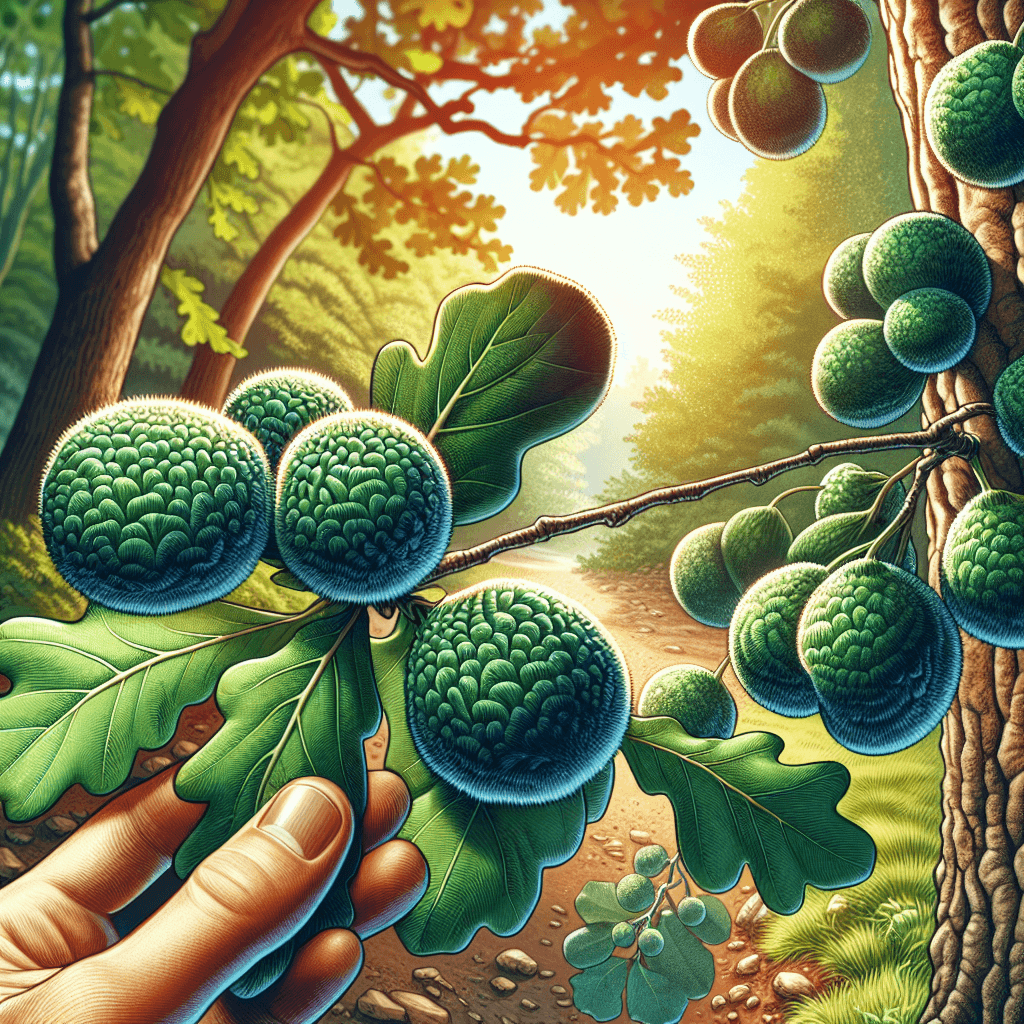Why do some oak trees grow strange, perfectly round 'apples' on their leaves
Those strange orbs aren't fruit from the tree, but intricate nurseries built by a tiny insect that has hijacked the oak's own biology.


Too Long; Didn't Read
TLDR: Those round growths are not fruit; they are galls. A tiny wasp lays an egg on an oak leaf, and the tree reacts by growing a protective, nutrient-rich home around the larva.
The Mystery Solved: Why Do Some Oak Trees Grow Strange, Perfectly Round 'Apples' on Their Leaves?
Have you ever been on a walk through a park or forest and noticed a perfect, green or reddish sphere hanging from an oak leaf, looking for all the world like a miniature, out-of-place apple? If so, you’ve stumbled upon one of nature’s most fascinating and deceptive creations. These are not fruits, nor are they a sign of disease. They are a masterfully engineered structure known as an oak apple gall, and their story involves a tiny architect with the power to bend a mighty oak to its will. This post will unravel the mystery behind these strange "apples," revealing the incredible biological process that creates them and the insect responsible for the spectacle.
Not a Fruit, But a Fortress: What is an Oak Apple Gall?
First and foremost, it's crucial to understand that an oak apple is not a part of the tree's normal growth. It is a type of plant gall—an abnormal growth of plant tissue. While the word "gall" might sound alarming, think of it less as a tumor and more as a highly structured, purpose-built nursery.
The gall is made entirely of tree tissue, but its growth has been hijacked and redirected by another organism. The result is a crisp, thin-skinned sphere that, if you were to cut it open, would reveal a spongy, fibrous interior with a small, hard seed-like object at the very center. That tiny object is the key to this entire phenomenon.
The Tiny Architect: Introducing the Gall Wasp
The mastermind behind the oak apple is a minuscule insect known as a gall wasp, part of the Cynipidae family. These wasps are incredibly small, often just a few millimeters long, and you are far more likely to see their handiwork than the wasps themselves. The creation of an oak apple gall is a remarkable feat of biological manipulation.
The process begins in the spring:
- The Injection: A female gall wasp selects a fresh, young oak leaf, often targeting a central vein. She uses her sharp ovipositor (an egg-laying organ) to pierce the leaf tissue and lay a single egg inside.
- The Hijacking: Along with the egg, the wasp injects a cocktail of chemicals that mimic the tree's own growth hormones. This is the critical step. These chemicals essentially reprogram the leaf's cells.
- The Construction: Tricked into action, the oak tree begins to grow new tissue rapidly around the foreign egg. Instead of forming a normal leaf structure, it builds the spherical gall. The tree itself provides all the materials and energy for this construction project.
This gall becomes a perfect life-support system for the developing wasp larva.
More Than Just a Home: A Nursery and a Pantry
The oak apple gall is a marvel of natural engineering, serving two vital functions for the wasp larva that hatches from the egg inside.
- A Secure Shelter: The gall's outer wall protects the vulnerable, grub-like larva from the outside world. It serves as a formidable barrier against predators like birds and other insects, and it shields the larva from harsh weather and dehydration.
- A Personal Pantry: The spongy, fibrous material inside the gall is rich in nutrients. This tissue serves as a dedicated food source, providing everything the larva needs to eat as it grows and develops through its pupal stage.
Once the wasp is fully grown, it will chew a tiny, perfectly round exit hole through the gall wall and fly away, leaving the now-empty brown sphere behind.
A Harmless Tenant? The Impact on the Oak Tree
A common question is whether these galls harm the oak tree. The good news is that, in almost all cases, the answer is no. While a gall does divert a small amount of the tree's energy and resources, a healthy, mature oak is so large that a few dozen—or even a few hundred—oak apples are a minor inconvenience at most. They do not feed on the tree's sap or spread disease. At worst, a heavily galled leaf might drop a bit earlier in the season, but this has no significant impact on the tree's overall health. They are a fascinating, and largely benign, part of the oak's ecosystem.
Conclusion
So, the next time you see one of those strange, perfectly round "apples" on an oak leaf, you'll know you're not looking at a fruit. You are witnessing the incredible result of an ancient and intricate relationship between an insect and a plant. These galls are not blemishes, but rather a testament to the power of a tiny wasp to command a mighty tree to build a custom-made nursery for its young. It's a reminder that the natural world is filled with complex, hidden stories, and sometimes, they hang in plain sight, looking just like a little green apple.


